 |
 |
 |
| |
CDC Study: Why the Disparities: The First National Look at HIV-Related Risk Behaviors Among Sexual Minority Male High School Students, United States, 2015 - High rates of injection drug use increases gay teens' HIV risk
|
| |
| |
- 7 times more likely to inject heroin, methamphetamines;
10-15% MSM injected vs 2% heterosexual/females
Reported by Jules Levin
Durban 2016 July 18-22
Laura Kann PhD, Emily O'Malley Olsen MSPH, Tim McManus MS, and Stephanie Zaza MD
High rates of injection drug use increases gay teens' HIV risk
⋅Had ever had sexual intercourse (51 percent of gay/bisexual and 41 percent of heterosexual).
⋅Were currently sexually active (35 percent of gay/bisexual and 30 percent of heterosexual).
⋅Had had sexual intercourse with four or more partners (15 percent of gay/bisexual and 11 percent of heterosexual).
⋅Had used a condom the last time they had sex (48 percent of sexually active gay/bisexual and 58 percent of sexually active heterosexual).
Despite similar levels of these behaviors, young gay and bisexual males remain at substantially higher risk for HIV infection than heterosexual males, largely because of substantially higher HIV prevalence among their male sexual partners. HIV diagnosis rates are 57 times higher among men who have sex with men (MSM) than among heterosexual men. The higher level of HIV in a sexual network dramatically increases the risk of HIV exposure with every sexual encounter.
About 10 percent of gay and bisexual male students reported having ever injected drugs, compared with less than 2 percent of heterosexual male students. In addition to injection drug use, which can directly transmit HIV, CDC also found gay and bisexual male students are significantly more likely than heterosexual male students to have ever used a number of drugs that may contribute to increased sexual risk behavior, even if not injected, including:
⋅Heroin: eight times more likely (14 percent of gay/bisexual and 2 percent of heterosexual).
⋅Methamphetamines: six times more likely (15 percent of gay/bisexual and 2 percent of heterosexual).
⋅Cocaine: three times more likely (18 percent of gay/bisexual and 5 percent of heterosexual).
⋅And prescription drugs without a doctor's prescription: two times more likely (30 percent of gay/bisexual and 17 percent of heterosexual).
"Sexual risk behaviors and substance use among gay and bisexual youth may be influenced by a number of complex and interrelated factors - not only education and peer norms, but also social factors like stigma, discrimination, and lack of family or social support," says Laura Kann, Ph.D., chief of the School-Based Surveillance Branch within CDC's Division of Adolescent and School Health. "Although these new national data do not address why these behaviors occur, they are an important first step toward better understanding the level of risks that exist among these young males and developing solutions to address them in homes, schools, and communities."






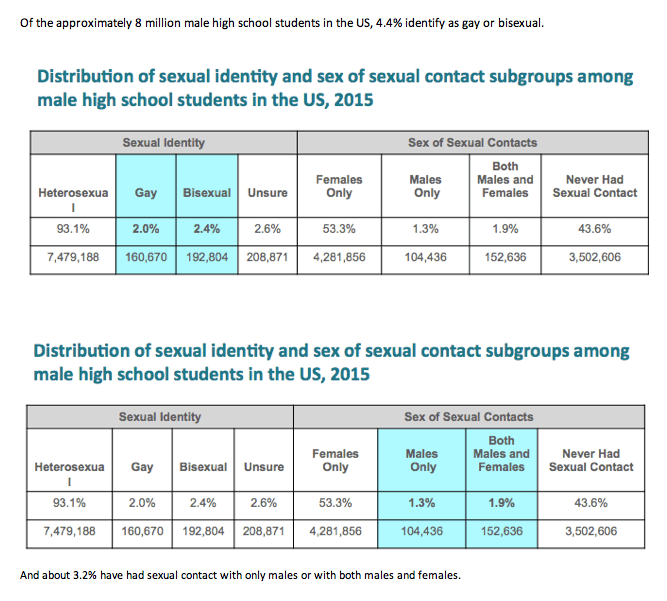
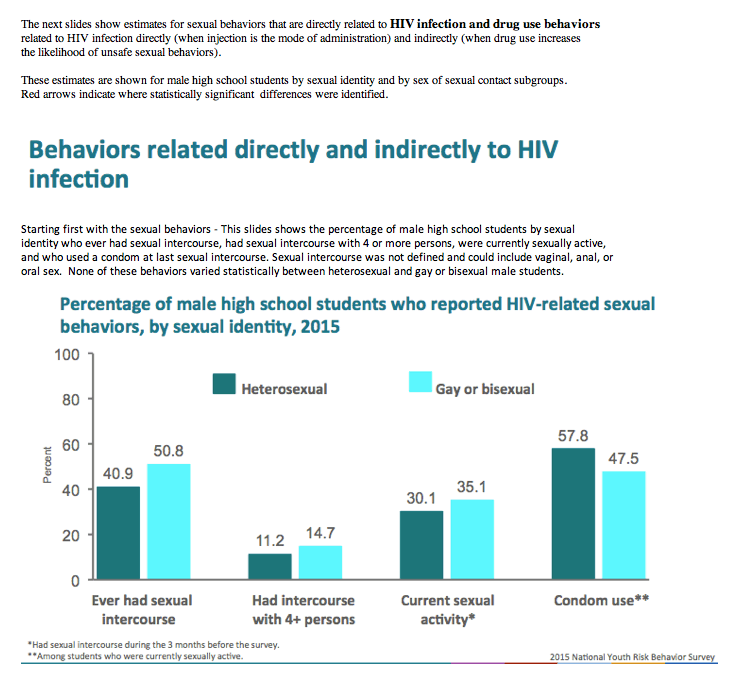

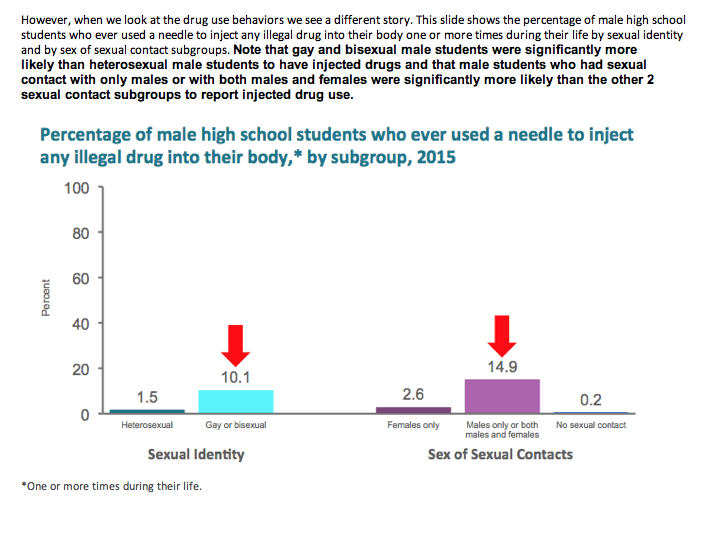
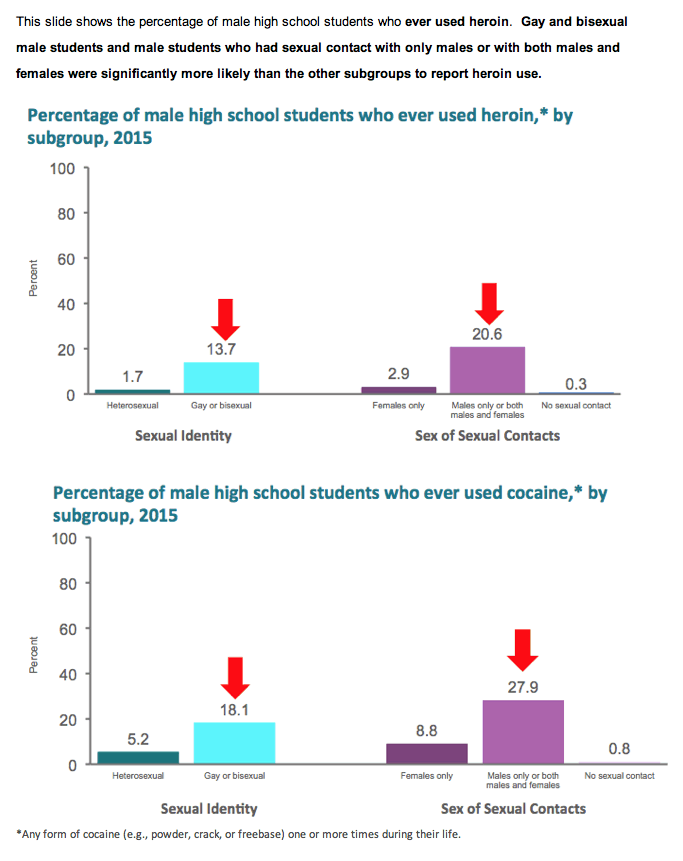
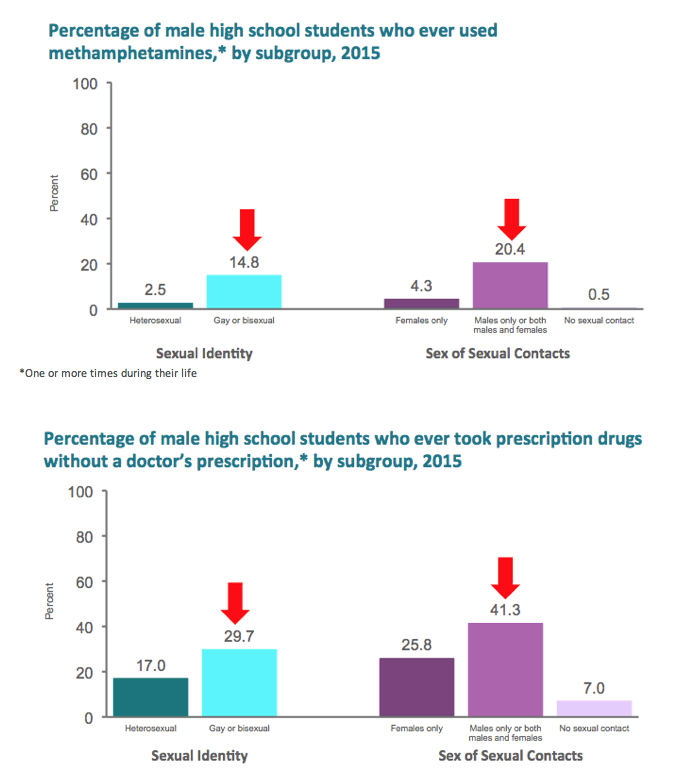

As with all studies, this one has its limitations. Obviously, because this was a school-based survey, the results apply only to males who attend school and not all young males. While most young sexual minority males are in school other research also documents that sexual minority youth might represent a disproportionate percent of school dropouts.
Second, as is common with surveys like the YRBS, the extent of under and over reporting cannot be determined although the survey questions demonstrate good test-retest reliability.
Third, it is possible that some students may not know their sexual identity, may be unwilling to disclose it or label themselves, or may not have understood the question. However, we do not have evidence that the words used to describe various types of sexual identity are unclear to high school students in the US.
|
| |
|
 |
 |
|
|